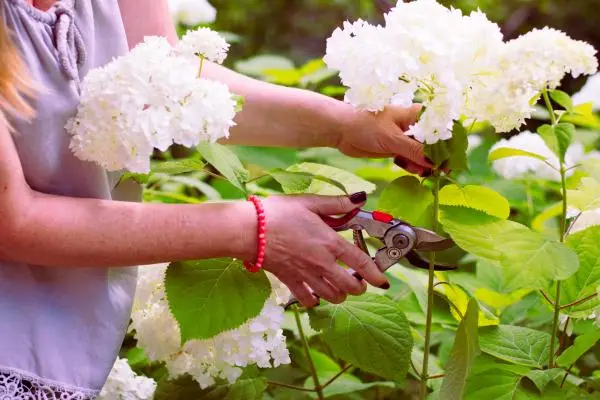Hydrangeas are one of the most valued plants as ornamental plants, as their flower heads or inflorescences, with small but large flowers as a whole, are tremendously decorative and showy. Since these are plants with a great diversity of types and varieties, it is very common to want to reproduce a specific plant that we have or have seen in order to enjoy it to a greater extent. Luckily, the propagation of hydrangeas is not difficult and it is enough to follow a few steps and indications so that it comes out well and without problems.
If you want to learn how the hydrangea plant reproduces, join us in this article where you will see a practical guide on how to reproduce hydrangeas by cuttings and seeds.
When to reproduce hydrangeas
The most common method to reproduce hydrangeas is by cutting, since it allows a faster reproduction and, in this way, we are sure that the new plant will have the same characteristics as the mother plant. And when to make hydrangea cuttings? The ideal time to take hydrangea cuttings is after flowering, which usually occurs in the fall.
On the other hand, if what we are looking for is to plant hydrangea seeds, the best time to do it will be both spring and autumn, depending on the local climate, so that the seedlings are not exposed to very extreme temperatures.
Reproduce hydrangeas by cuttings
The cuttings technique is a way of reproducing plants in which we cut a small branch or stem of a parent plant to plant it and that gives rise to a new individual, genetically equal to the parent and, therefore, with the same characteristics. Follow these steps to reproduce hydrangeas by cuttings :
- The first thing you should do is cut the cutting, of course. Make sure to sanitize your pruning shears , though you can also use a knife if it’s really sharp and sanitized as well. It is very important that the cut is made on the bias, diagonally, and that it is as clean as possible, in order to make it easier for the plant to heal the wound without suffering attacks from pests or diseases through the weak point.
- For the multiplication of hydrangeas by cutting, it is enough to obtain a stem of at least 10 cm , with at least three nodes and new buds. If the stem is very long, several cuttings can be obtained from one.
- After this, all the leaves of the last node of the cutting are removed, cutting them at the base of the node and leaving only half of the remaining ones. Thanks to this leaf cleaning , we minimize the dehydration that the new plant will suffer from its leaves.
- Keep the cuttings on a damp towel or with absorbent paper so they don’t dry out.
- The next thing is to prepare the substrate for the cutting . Ideally, use a mixture like the seedbed: peat , worm castings and coconut fiber in equal parts, together with vermiculite and perlite. Adding perlite and vermiculite to an acid soil plant substrate mixed with sand also works well.
- Once the seedbed or pot with the new substrate has been prepared, make a hole with a stick and you can start planting the hydrangeas by cutting, putting them about 2 cm in the mixture. You can help yourself with a little growth hormone or homemade organic rooting to improve the chances of success of the cutting.
- After this, it will be enough to water the cuttings and place them in a sheltered area, in the shade and with good humidity. In about 20 days, your hydrangea cuttings should have rooted, but it’s best to wait for the buds to grow before transplanting them.

Reproduce hydrangeas by seeds
Although it is less common in the cultivation of hydrangeas, it is also possible to multiply this plant in a traditional way: by seeds. Follow these steps to reproduce hydrangeas by seeds :
- To begin, logically, you will need the seeds. How to get hydrangea seeds ? The safest thing is to buy them from a trusted nursery or from a plant in good condition that you have or someone you know has.
- If you plant your hydrangea in a pot, choose a good-sized container with drainage holes. Prepare a substrate rich in organic matter , as these plants need it.
- Spread the seeds on the soil or substrate and add a few centimeters of soil on top, then watering with a fine spray so that the water does not drag the seeds.
- You must maintain a certain level of humidity in the soil until the seeds germinate and the seedlings have become strong, so it is necessary that you water frequently, but always without flooding the substrate.
- It is preferable to plant in a seedbed or in a semi-shady area so that, once the small plants have become strong, transplant them to their final location, which must be illuminated. The transplant must always be carried out between late autumn and early winter, before the plant comes out of vegetative rest.
- The most important thing in the care of young hydrangeas is to maintain very frequent waterings during their first year or two of life.
